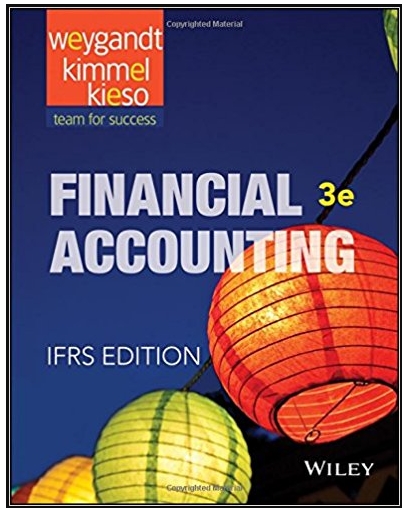A parent company acquired 70% of the stock of a subsidiary company on January 1, 2017, for $610,000. On this date, the balances of the
A parent company acquired 70% of the stock of a subsidiary company on January 1, 2017, for $610,000. On this date, the balances of the subsidiary’s stockholders’ equity accounts were Common Stock, $500,000, and Retained Earnings, $100,000. On January 1, 2017, the market price for the 30% noncontrolling interest was $270,000.
An examination of the subsidiary’s assets and liabilities on January 1, 2017 revealed that book values were equal to fair values for all items except two: (1) merchandise, which had a book value of $120,000 and a fair value of $170,000, and (2) intangible assets which had a fair value of $300,000 and a book value of zero. Both companies use the FIFO inventory method and sell all of their inventories at least once per year. The intangible assets had a useful life of 10 years.
On January 1, 2018, the subsidiary sold a building to the parent for $500,000. On this date, the building was carried on the subsidiary’s books (net of accumulated depreciation) at $400,000. Both companies estimated that the building has a remaining life of 10 years on the intercompany sale date, with no salvage value.
The parent regularly sells merchandise to the subsidiary with a profit margin of 35 percent of sellingprice. During 2019, intercompany sales amount to $200,000, of which $60,000 of merchandise remains in the ending inventory of the subsidiary on December 31, 2019. On December 31, 2019, $50,000 of these intercompany sales remained unpaid. Additionally, during 2018, intercompany sales amount to $150,000 of which $40,000 of merchandise remained in the ending inventory of the subsidiary on December 31, 2018. On December 31, 2018, $60,000 of these intercompany sales remained unpaid.
The parent accounts for its Equity Investment in the subsidiary using the equity method. Uncon- firmed profits are allocated pro-rata. The pre-consolidation financial statements for the two companies for the year ended December 31, 2019, are provided below:

a. Disaggregate and document the activity for the 100% Acquisition Accounting Premium (AAP), the controlling interest AAP, and the noncontrolling interest AAP.
b. Calculate and organize the profits and losses on intercompany transactions and balances.
c. Compute the pre-consolidation Equity Investment account beginning and ending balances starting with the stockholders’ equity of the subsidiary.
d. Reconstruct the activity in the parent’s pre-consolidation Equity Investment T-account for the year of consolidation.
e. Independently compute the owners’ equity attributable to the noncontrolling interest beginning and ending balances starting with the owners’ equity of the subsidiary.
f. Independently calculate consolidated net income, controlling interest net income and noncontrolling interest net income.
g. Complete the consolidating entries according to the C-E-A-D-I sequence and complete the consolidation worksheet.
Parent Subsidiary Parent Subsidiary Income statement: Balance sheet: Sales.... $2,000,000 Cash... $ 100,000 S750,000 (450,000) 78,000 Cost of goods sold (1,000,000) Accounts receivable 100,000 200,000 Inventories . Buildings and equipment, net. Other assets..... Equity investment. Total assets.... 500,000 150,000 Gross profit..... 1,000,000 300,000 400,000 237,500 300,000 500,000 Depreciation & amort. expense Operating expenses.. Income (loss) from subsidiary. (50,000) (650,000) 47,714 (40,000) (160,000) 814,000 $2,129,500 $1,250,000 Net income.. $ 347,714 $100,000 Statement of retained earnings: Beginning retained earnings. Net income.... $ 100,000 300,000 1,000,000 729,500 $ 681,786 347,714 $500,000 100,000 (50,000) Accounts payable. Other liabilities .. $ 50,000 150,000 Dividends declared. (300,000) Common stock. 500,000 Ending retained earnings. $ 729,500 $550,000 Retained earnings 550,000 ...... Total liabilities and equity $2,129,500 $1,250,000
Step by Step Solution
3.45 Rating (155 Votes )
There are 3 Steps involved in it
Step: 1

See step-by-step solutions with expert insights and AI powered tools for academic success
Step: 2

Step: 3

Ace Your Homework with AI
Get the answers you need in no time with our AI-driven, step-by-step assistance
Get Started


